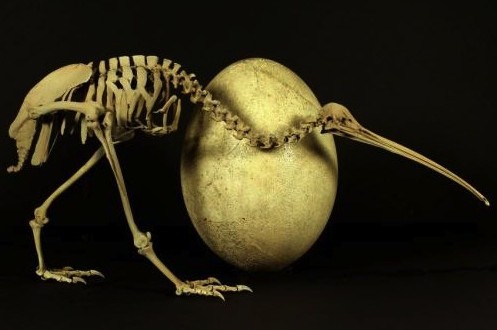Australia can no longer lay claim to the origins of the iconic New Zealand kiwi following research published today showing the kiwi’s closest relative is not the emu as was previously thought.
Instead, the kiwi is most closely related to the extinct giant Madagascan elephant bird which grew up to three metres tall and weighed 275 kilograms.
And the study found that both of these flightless birds once flew.
According to Time, researchers working at the Australian Centre for Ancient DNA in the University of Adelaide, has found the kiwi and Australia’s emu were not related after all. The findings reveal that the 2.3 metre-tall elephant bird from Madagascar is the closest relative of the kiwi.
Professor Alan Cooper and his colleagues have solved the mystery of how giant flightless birds like the ostrich and emu found their way across the continents.
Scientists extracted the DNA from the bones of elephant birds at the Museum of New Zealand in Te Papa Tongarewa which led to the discovery of the genetic connection between the two birds. Despite the differences in appearance and location, the elephant bird and the kiwi have a genetic connection.
According to researchers, the discovery also meant that the flightless kiwi once had the ability to fly. Kieren Mitchell, one of the researchers at the centre, said the DNA test result was unexpected considering the geographical distance of New Zealand and Madagascar. They were remotely joined via Antarctica and Australia which would explain flightless birds may have spread around the world by flying.
Researchers believe New Zealand’s kiwi and Madagascar’s elephant bird descended from a small flying bird which may have flown from Antarctica long ago. The flying ancestors of the kiwi dispersed around the world after the extinction of the dinosaurs and continued to evolve from then on.
The recent study has corrected Professor Cooper’s findings in the 1990s that the kiwi’s closest relatives were the cassowary and the Australian emu. Reports said the scientist apologised to New Zealanders for “taking so long” to disprove the earlier claim.
Agencies/Canadajournal
 Canada Journal – News of the World Articles and videos to bring you the biggest Canadian news stories from across the country every day
Canada Journal – News of the World Articles and videos to bring you the biggest Canadian news stories from across the country every day



